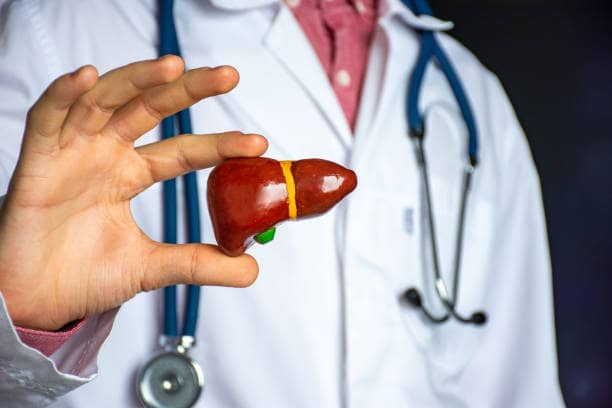Hives Skin Disease and its Treatment: Hives, also known as urticaria, are a common skin condition that can affect people of all ages. Characterized by raised, itchy, and often red welts on the skin, hives can be uncomfortable and distressing. While they are usually harmless and short-lived, they can cause significant discomfort. In this comprehensive guide, we will delve into the causes, symptoms, and various treatment options for hives.

Understand Hive:
I. What Are Hives?
Hives are an allergic reaction that occurs when the body releases histamines into the bloodstream. Histamines are chemicals that your body produces in response to an allergen, which can be anything from certain foods to medications, insect stings, or environmental factors like pollen. When histamines are released, they cause small blood vessels to leak, leading to the characteristic raised welts and itching associated with hives.
II. Symptoms of Hives
Hives typically present as raised, red or pink welts on the skin that are often surrounded by an area of redness. They can vary in size and shape and may appear anywhere on the body. Common symptoms of hives include:
- Itching: Hives are intensely itchy, and the urge to scratch can be overwhelming.
- Swelling: The affected area may become swollen, making it appear puffy.
- Redness: The welts are usually surrounded by a red halo.
- Burning or stinging: Some individuals with hives may also experience a burning or stinging sensation.
- The welts may come and go, with new ones appearing as old ones fade.
While hives are generally harmless, they can be uncomfortable and distressing, especially when they persist or become chronic.
III. Types of Hives
There are two main types of hives:
- Acute Hives: Acute hives typically last for less than six weeks and are often triggered by an allergic reaction to food, medication, insect stings, or other allergens. They can also be caused by stress, infections, or physical factors like pressure on the skin.
- Chronic Hives: Chronic hives last for more than six weeks and can persist for months or even years. The exact cause of chronic hives is often more challenging to determine, and they may be related to autoimmune disorders or other underlying health conditions.
IV. Diagnosis of Hives
Diagnosing hives usually involves a thorough medical history and physical examination by a healthcare professional. In some cases, additional tests may be necessary to determine the underlying cause, especially when hives are chronic. These tests may include:
- Allergy testing: If the cause of hives is suspected to be an allergen, such as certain foods or medications, allergy tests may be conducted to identify specific triggers.
- Blood tests: In cases of chronic hives, blood tests can help rule out underlying medical conditions, such as autoimmune disorders or thyroid problems.
- Skin biopsy: In rare cases, a skin biopsy may be performed to rule out other skin conditions that can mimic hives.
Once hives are diagnosed, treatment can be tailored to address the underlying cause and alleviate symptoms.
V. Treatment Options for Hives
The treatment for hives primarily focuses on relieving symptoms and identifying and managing the underlying cause when possible. Here are various treatment options for hives:
- Avoidance of Triggers:
- If the cause of hives is known, the most effective approach is to avoid the trigger. This may involve dietary changes, discontinuing specific medications, or minimizing exposure to environmental allergens.
- Over-the-Counter (OTC) Antihistamines:
- Non-prescription antihistamines, such as cetirizine (Zyrtec), loratadine (Claritin), or diphenhydramine (Benadryl), can help relieve itching and reduce the appearance of hives. These are often the first line of defense against acute hives.
- Prescription Antihistamines:
- In cases of severe or chronic hives, a healthcare provider may prescribe stronger antihistamines, such as fexofenadine (Allegra) or desloratadine (Clarinex).
- Corticosteroids:
- In more severe cases of hives, short-term use of oral corticosteroids like prednisone may be prescribed to reduce inflammation and control symptoms. However, these are not typically recommended for long-term use due to potential side effects.
- Epinephrine (Adrenaline):
- For rare cases of hives accompanied by a severe allergic reaction called anaphylaxis, epinephrine may be administered as an emergency treatment.
- Immune-Suppressing Medications:
- In cases of chronic hives that do not respond to other treatments, immune-suppressing medications like cyclosporine or omalizumab (Xolair) may be considered.
- Phototherapy:
- Some individuals with chronic hives may benefit from phototherapy, a treatment that involves exposing the skin to controlled doses of ultraviolet (UV) light.
- Lifestyle Modifications:
- Managing stress through relaxation techniques, such as yoga or meditation, can help reduce the frequency and severity of hives in some individuals.
- Wearing loose-fitting clothing and avoiding excessive heat or sweating can also minimize irritation to the skin.
VI. Home Remedies for Hives
In addition to medical treatments, there are several home remedies and lifestyle changes that can help alleviate the discomfort associated with hives:
- Cool Compresses: Applying a cool, damp cloth to the affected area can help soothe itching and reduce inflammation.
- Oatmeal Baths: Adding colloidal oatmeal to a bath can provide relief from itching and irritation.
- Avoid Triggers: If you know the trigger for your hives, make every effort to avoid it.
- Hydration: Staying well-hydrated can help keep the skin healthy and reduce the severity of hives.
- Topical Creams: Over-the-counter hydrocortisone creams can be applied to the affected area to reduce itching and inflammation.
- Aloe Vera Gel: Applying aloe vera gel to the skin can provide soothing relief.
- Avoid Scratching: As tempting as it may be, scratching hives can worsen the condition and increase the risk of infection. Try to resist the urge to scratch.
VII. When to Seek Medical Attention
While most cases of hives can be managed at home with over-the-counter treatments, there are situations in which you should seek immediate medical attention:
- Difficulty breathing or swallowing: If hives are accompanied by difficulty breathing, swelling of the face, lips, tongue, or throat, or a feeling of impending doom, it may be a sign of anaphylaxis, a severe allergic reaction that requires immediate treatment with epinephrine.
- Rapid spread or severe swelling: If the hives spread rapidly, cover a large area of the body, or cause severe swelling, you should seek medical help.
- Fever or joint pain: If hives are accompanied by fever or joint pain, it may be a sign of an underlying medical condition that requires evaluation by a healthcare provider.
- Prolonged or worsening symptoms: If your hives persist for more than a few days or worsen despite treatment, consult a healthcare professional for further evaluation.
Conclusion:
Hives can be a distressing skin condition, but with the right approach, they can be effectively managed and treated. The key to managing hives is to identify and avoid triggers when possible, use appropriate medications as prescribed, and maintain good skin care practices. If you suspect you have hives or are experiencing symptoms, consult a healthcare provider for an accurate diagnosis and treatment plan tailored to your specific needs. With the right guidance and care, you can find relief from hives and enjoy healthier, itch-free skin.








One thought on “Hives Skin Disease and its Treatment”